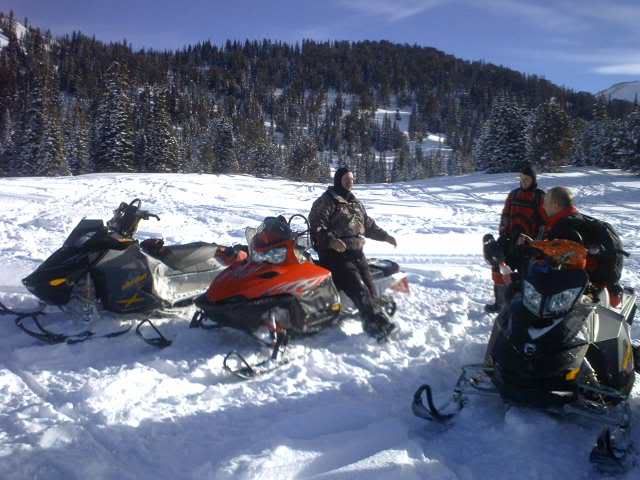I have a lot of empathy & sadness for those that have passed & those that are left behind, I hope their families can move on with the rest of their lives in a positive manner.
On the other hand I am blown away & disgusted by the amount of denial in our community about what happened here. Very few want to admit the amount of negligence that occurred. It think it's shameful & is a disservice to the dead AND more important to those that have survived that people want to dent the reality which is... AN OUTRAGEOUS AMOUNT OF RULES WERE BROKEN HERE. By the riders, by the spectators, but the guy who cut above another rider and on & on... All I see here is poor decision making that needs to be curbed, and if we as a community keep saying that this was "an act of god" or that nobody is at fault, then we look like the morons that the rest of the world thinks we are right now.
I've spent my last couple days fighting this perception on another site, the constant assumption that we're all stupid 2 stroke fueled lackeys seems to be relatively common amongst other bc travelers. Things like this don't help & if people don't start owning up to how we need to CHANGE instead of all the coombayaa bullsh** we'll keep dying, they'll keep being right & the gov't will just have better fuel to regulate us out of the backcountry.
Flame away, I'm the bad guy here.
good post backcountryislife.
Avalanche conditions that day where "EXTREME DANGER"
Take a minute and read this next part.........PLEASE READ AND PASS THIS ON....IT MAY SAVE YOUR LIFE OR THE LIFE OF YOUR LOVED ONES......
ALP TRUTh
Use this checklist to assess snow conditions. As Bruce Tremper clarifies in his outstanding Staying Alive in Avalanche Terrain:
Presence of three or four clues is a warning to make your next decision very carefully.
Presence of five or more clues means that you should not continue unless you have expert knowledge to evaluate and manage the avalanche hazard. Even then, your best option may be to choose a safer slope.
Remember: avalanches occur most frequently when the slope angle is between 35- and 45-degrees. Be sure to get a slope meter. Check out Straight Chuter’s review of the Pieps 30-Degrees Plus.
A: Avalanches
Look for avalanche activity in the last 48 hours. Notice the aspects, elevations, and size. Avoid similar slopes.
L: Loading
Look for loading of new or wind-blown snow that has occurred over the last 48 hours.
P: Path
Are you in an obvious avalanche path?
T: Terrain Trap
Are you in a terrain trap like a gully or underneath a steep slope? If an avalanche were to occur, would you get carried into a gully, into trees, or off a cliff?
R: Rating
Is the avalanche rating considerable (natural avalanches are possible and human triggered avalanche likely) or higher?
U: Unstable Snow
Listen for whoomphing sounds and look for cracking, which are tell-tale signs of unstable snow.
Th: Thawing
Has there been a rapid rise in temperature or a prolonged thaw of the snowpack?
FACETS
FACETS is a bit more abstract than ALP TRUTh, but it is just as important. Be mindful of this acronym to mitigate human risks. FACETS helps you get ego, emotions, and the dreaded group-think in check.
F: Familiar Terrain
“Don’t worry. I was here yesterday.” People take more risks in terrain they’re familiar with. Don’t let familiarity fool you. Conditions change minute-to-minute, so treat all terrain like it’s the first time you’ve seen it.
A: Acceptance
Consciously or unconsciously, we try to win over approval from our friends and peers. Pushing on because you don’t want to sound like a worrywart, not speaking up because you don’t want to go against the grain, even though things don’t feel right—these are examples of Acceptance.
C: Commitment
“I’m gonna ski that line/reach the summit even if it kills me.” It might. When we have an overwhelming commitment to a goal or belief, we tend to block out our better judgment and focus on the things that will help us achieve our goal.
E: Expert halo
The person who takes the lead might not always know best. “Oh, he’s been here before and has a lot more experience than I do. It’s probably fine.” Be mindful of these thoughts, and speak up if you’re having them. Chances are someone else in the group is having them, too.
T: Tracks
Everyone loves fresh tracks. When there are multiple parties out to poach a limited number of lines, we tend to take more risks. We want that snow for ourselves. Pay attention to that desire, but don’t give in to it when things are sketchy. Also: existing tracks give a false sense of security. Just because someone skied it doesn’t mean it’s safe.
S: Social Proof
This is the herding instinct or group-think. We like to go with the flow when we’re with groups. It’s easier to step into a dicey traverse when three others have gone before you. Speaking up is one of the hardest things to do. Remember to always assess the situation as if you were traveling alone—even when you’re in a group of “experts.”
It was very unfortunate that 2 people lost their lives....Very sad...VERY PREVENTABLE...



